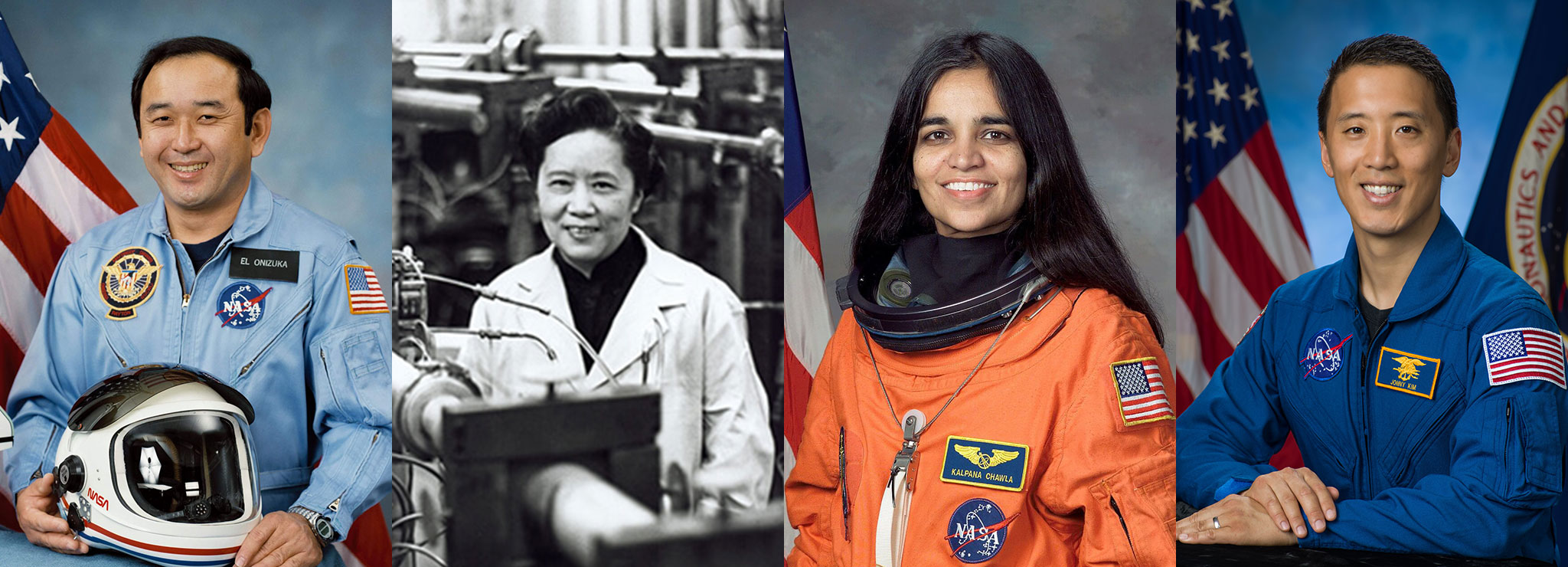Blogs | 5.20.2021
Honoring Asian American & Pacific Islander STEM Trailblazers

Asian Americans and Pacific Islanders have made, and continue to make, extraordinary contributions in STEM fields. This Asian American and Pacific Islander Heritage Month, we’re celebrating some of the heroes of past and present who are critical to the advancement of science and space exploration. Seen left to right . . .
Ellison Onizuka, Challenger Mission Specialist
Ellison Onizuka was the first Asian American in space. He was born in 1946 in Hawaii and studied aerospace engineering at the University of Colorado, where he earned bachelor’s and master’s degrees in 1969. He served in the United States Air Force before being selected as an astronaut in 1978. Onizuka’s first flight to space took place on January 24, 1985 on the Space Shuttle Discovery. Onizuka became the first Asian American to reach space and the first person of Japanese ancestry to reach space, but sadly died in the Challenger tragedy. Onizuka was posthumously awarded the Congressional Space Medal of Honor. Learn more about Onizuka here.
Dr. Chien-Shiung Wu, Physicist
Dr. Chien-Shiung Wu, commonly referred to as the First Lady of Physics, was a pioneer in particle and experimental physics. She was born in 1912 in China and graduated at the top of her class with a degree in physics from the National Central University in Nanking, China. After immigrating to the United States, she enrolled at the University of California Berkley and graduated in 1940 with a PhD in physics. She made significant contributions in atomic science, including the Manhattan Project: the code name for research into atomic weapons during World War II. Specifically, she improved existing technology to detect radiation and the enrichment of uranium in large quantities. Learn more about Dr. Wu here.
Kalpana Chawla, Flight Engineer and Columbia Mission Specialist
Kalpana Chawla was the first Indian woman to go to space. Chawla was born in 1962 in India. She had a fascination with planes when she was young. After getting a bachelor’s degree in aeronautical engineering from Punjab Engineering College in India, she moved to the United States in 1982 and earned a master’s degree in aerospace engineering from the University of Texas as well as a second master’s and a Ph.D. in aerospace engineering from the University of Colorado. In 1994, she was selected by NASA as an astronaut candidate. She worked on the development of Robotic Situational Awareness Displays and testing space shuttle control software in the Shuttle Avionics Integration Laboratory. In 1996, Kalpana Chawla was assigned as mission specialist and prime robotic arm operator on STS-87. She flew on STS-87 (1997) and STS-107 (2003), logging 30 days, 14 hours and 54 minutes in space. Tragically, the STS-107 mission ended abruptly on February 1, 2003, when the crew perished during entry. Chawla was posthumously awarded the Congressional Space Medal of Honor. Learn more about her here.
Jonny Kim, Navy Lieutenant and NASA Astronaut
Born in 1984 in Los Angeles to Korean American immigrants, Jonny Kim was selected as part of the 22nd NASA Astronaut Group in 2017 and is awaiting assignment with the Artemis program. Kim is currently a Navy Lieutenant (and former SEAL) and was deployed to the Middle East twice, serving in over 100 combat missions. He was awarded a Silver Star medal for rescuing several wounded Iraqi soldiers during his service. While studying at Harvard Medical School, Kim met and was inspired to apply to be an astronaut. In 2017, he was one of twelve candidates chosen from a pool of over 18,300 applicants to join NASA Astronaut Group 22 and is now training for the 2024 Moon landing. Learn more about Kim here.
